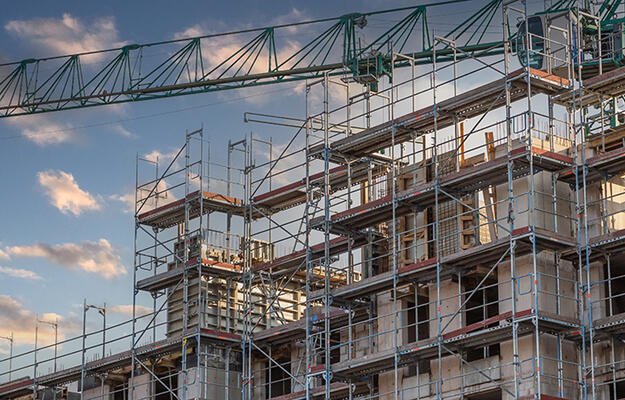
(Drazen_/Getty Images)
Three Obstacles Federally Assisted Housing Programs Need to Overcome to Better Serve Residents with Disabilities
This post was originally published on Urban Wire, the blog of the Urban Institute.
The nation’s affordable housing shortage affects millions of people with low wages, but for people with disabilities, finding quality housing they can afford is even harder. One in 4 adults in the US has some type of disability, and they face further housing challenges related to affordability, physical accessibility, and disability discrimination.
Within federally assisted housing, these challenges are compounded by additional obstacles people face because of their incomes, age, intersections with race and ethnicity, and the age of housing stock where they live. Twenty-three percent of residents living in housing funded through the US Department of Housing and Urban Development reported having a disability. Almost all households living in public housing have very low incomes (below 50 percent of an area’s median income), and almost 3 out of 4 households have extremely low incomes (below 30 percent).
More than 1 out of 3 working-age residents who are the head of a household living in public housing report having a disability; this increases to 40 percent for those ages 62 and older. Residents in federally assisted housing are also more likely to be Black than the general population. And 51 percent of public housing units are more than 40 years old, making them difficult and expensive to modify to satisfy reasonable accommodation requests and make more physically accessible.
To understand obstacles to accessible and service-connected housing for younger adults, families, and children with disabilities, for the first phase of our research, we interviewed experts in housing and disability law, federally assisted housing programs, and disability advocacy. We focused on three federal housing programs that provide low-cost rental housing to eligible households with low incomes: public housing, project-based rental assistance through the Section 8 program, and the Low-Income Housing Tax Credit Program.
We found three key challenges federally assisted housing programs face in adequately serving people with disabilities.
- No centralized place exists to find and apply for accessible, affordable housing
Experts explained that the fragmentation of the federally assisted housing portfolio creates a “housing labyrinth” people with disabilities must navigate. Public housing waiting lists are not always separated into those who need accessible units and those who don’t, creating frequent mismatches between what residents need and what units are offered. Residents may also not have a clear understanding of how to let housing authority staff know they need an accessible unit when they apply for housing.
- Older buildings lack sufficient resources for adequate maintenance and reasonable accommodations
Most federally assisted housing was built more than four decades ago, before legal requirements for physical accessibility as a fair housing right existed for federally financed properties. These older rental units are difficult to physically modify, often requiring considerable resources to satisfy reasonable accommodation requests today. Some older, multistory buildings have commercial uses on the ground floor, requiring an elevator to make them accessible. Older buildings are more likely to experience maintenance issues, and when those issues arise, they are often expensive to fix.
With limited budgets, maintenance costs can compete with requests to modify units. The most common modifications needed can be costly, including elevators, bathroom and kitchen modifications, and enlarged entryways.
- The reasonable accommodation process is burdensome to administer and requires knowledge and persistence from residents
Some public housing authorities have hired staff to handle the volume of reasonable accommodation requests and process them correctly. But these processes can involve a lot of back and forth and require extensive amounts of time from both the resident and the housing manager to gain approval.
Experts we spoke with shared several cases where public housing authorities create procedural barriers by requiring medical documentation to separate out “legitimate requests” and ensure limited capital resources are being spent effectively. Experts also said residents may experience pushback about “whether the reasonable accommodation request is necessary” or may be asked to transfer units instead of having their existing unit modified, potentially leaving family, communities, and services behind.
Advancing disability equity in federally assisted housing requires resources and an inclusive approach
To advance equity for people with disabilities, improving federally assisted housing is critical. By providing adequate funds to renovate and operate public housing and other older buildings, federal policymakers can promote standardized physical accessibility and satisfactory responses to all reasonable accommodation requests.
The Build Back Better Framework proposed nearly $65 billion to preserve, repair, and rebuild public housing. But the future of Build Back Better remains uncertain, jeopardizing critical maintenance and repairs and expanded accessibility for people with disabilities.
In an effort to better engage with the disability community, the White House has added a disability policy director to its Domestic Policy Council and is hosting monthly calls with disabled stakeholders through its Office of Public Engagement. This type of effort can help ensure housing policies and programs address the disabled community’s priorities and promote housing equity.


